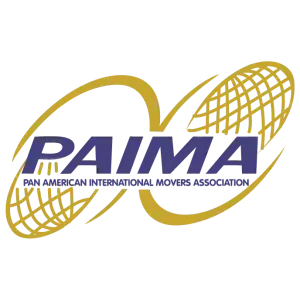Flying with pets can be a stressful experience for both the pet and the owner. However, with proper planning and preparation, it can also be a safe and comfortable journey. Whether you are relocating with your pet or simply taking them on vacation, it is important to know what to expect when flying with pets. This blog will provide you with a comprehensive guide to ensure a smooth journey for you and your furry companion.
Pre-Flight Preparation
Preparation is key to ensuring a smooth and successful journey when flying with a pet. In the pre-flight stage, pet owners should take several steps to prepare for their pet’s travel experience. These steps include researching airline policies, obtaining necessary health certificates and vaccinations, purchasing an airline-approved pet carrier, and packing necessary items for the pet.
Researching airline policies is the first step in preparing to fly with a pet. Each airline has different rules and regulations regarding pet travel, and it is important to be familiar with these policies to avoid any surprises or issues on the day of travel. Some airlines allow pets to travel in the cabin with their owners, while others require pets to travel in the cargo hold. Some airlines may have restrictions on the type and size of pets allowed on board, as well as the number of pets allowed per passenger. It is important to read the airline’s pet policy carefully to understand all requirements and restrictions.
Obtaining necessary health certificates and vaccinations is also an important step in pre-flight preparation. Most airlines require a health certificate issued by a veterinarian within a certain time frame before travel. This certificate verifies that the pet is healthy and fit for travel. Some airlines may also require proof of vaccinations, such as rabies or distemper. It is important to consult with a veterinarian to ensure that the pet is up-to-date on all required vaccinations and to obtain the necessary health certificate.
Purchasing an airline-approved pet carrier is another important step in pre-flight preparation. The carrier should be large enough for the pet to stand, turn around, and lie down comfortably, but not so large that the pet can move around too much during the flight. The carrier should also be well-ventilated and have a secure latch to prevent escape. It is important to check the airline’s requirements for pet carriers, as some airlines may have specific size or weight restrictions.
Packing necessary items for the pet is also an important step in pre-flight preparation. These items may include food and water dishes, toys, blankets, and any necessary medication or grooming supplies. It is important to pack enough food and water for the duration of the trip, as well as any necessary medication or grooming supplies. It is also important to include familiar items, such as a favourite toy or blanket, to help the pet feel more comfortable during the flight.
In summary, pre-flight preparation is crucial when flying with a pet. Pet owners should research airline policies, obtain necessary health certificates and vaccinations, purchase an airline-approved pet carrier, and pack necessary items for the pet. By taking these steps, pet owners can ensure a safe and comfortable journey for their furry companion.
Airport Procedures
Once the pet owner has completed all necessary pre-flight preparations, it is time to navigate airport procedures. These procedures can be stressful, but by following guidelines and allowing extra time for check-in and security procedures, the process can be made much easier.
The first step is to arrive at the airport early. Pet owners should plan to arrive at least 2-3 hours before their flight to allow time for check-in and security procedures. It is also important to note that some airlines may require an earlier check-in time for passengers traveling with pets.
At the check-in counter, the pet owner will need to provide all necessary documentation, including the pet’s health certificate and proof of vaccinations. The airline staff will also need to check the pet carrier to ensure that it meets their requirements. The pet owner should be prepared to answer any questions the airline staff may have about the pet’s travel arrangements.
After check-in, the pet owner will need to go through security with their pet. There are specific guidelines for traveling with pets, which can be found online. These guidelines include removing the pet from the carrier and carrying them through the metal detector, as well as removing any food or water dishes from the carrier before going through security.
Once through security, the pet owner should find a quiet area to prepare the pet for travel. This may include providing the pet with food and water or taking them outside for a potty break. It is important to note that some airports have designated pet relief areas, which can be found on the airport’s website or by asking an airport staff member.
When it is time to board the plane, the pet owner should board early to get settled with the pet before other passengers begin boarding. The airline staff will provide instructions on how to store the pet carrier during the flight. Some airlines may allow the carrier to be stored under the seat in front of the pet owner, while others may require the carrier to be stored in the overhead compartment.
In summary, navigating airport procedures when traveling with a pet can be stressful, but by allowing extra time for check-in and security procedures, following TSA guidelines, and finding a quiet area to prepare the pet for travel, the process can be made much easier. By taking these steps, pet owners can ensure a smooth journey for their furry companion.
In-Flight Experience
The in-flight experience can be a challenging part of traveling with pets. The pet owner should be prepared to manage the pet’s comfort during the flight, provide food and water as necessary, and address any issues that arise during the flight.
To start, the pet owner should board the plane early to get settled with the pet. It is important to follow the airline’s guidelines for storing the pet carrier during the flight. This may include placing the carrier under the seat in front of the pet owner or in the overhead compartment.
During the flight, the pet owner should be prepared to manage the pet’s comfort. This may include providing food and water as necessary, but it is important to note that some airlines may have restrictions on when and how much food and water can be given to pets during the flight. It is also a good idea to provide the pet with a familiar blanket or toy to help them feel more comfortable during the flight.
If any issues arise during the flight, the pet owner should address them as quickly and calmly as possible. This may include the pet becoming agitated or needing to use the bathroom. If the pet becomes agitated, the owner should try to soothe them by speaking softly and offering reassurance. If the pet needs to use the bathroom, the owner should follow airline guidelines for taking the pet to the designated relief area.
It is important to note that some pets may experience anxiety during the flight. This can be caused by the unfamiliar surroundings, loud noises, or changes in air pressure. The pet owner should speak with their veterinarian prior to the flight to discuss options for managing anxiety, such as medication or natural remedies.
In conclusion, the in-flight experience can be a challenging part of traveling with pets. By following airline guidelines for storing the pet carrier, managing the pet’s comfort during the flight, and addressing any issues that arise, pet owners can ensure a smooth journey for their furry companion. It is important to be prepared for any situation and to consult with a veterinarian prior to the flight to discuss options for managing anxiety.
Arrival at Destination
Once you have arrived at your destination, retrieve your pet from baggage claim or the designated pet pick-up area. Give them some time to adjust to the new environment, as it can be stressful for them to travel and be in a new place.
Address any health or behaviour concerns that arise after the flight. If your pet appears sick or is exhibiting unusual behaviour, take them to a veterinarian as soon as possible. Additionally, continue to provide proper care for your pet during the trip and beyond, including feeding them a balanced diet and providing plenty of exercise and playtime. After the flight, the pet owner will need to retrieve the pet from the designated baggage claim or pet pick-up area. It is important to remember that pets may become disoriented or anxious after the flight, so it is best to approach them slowly and calmly. Once the pet is retrieved, the owner should allow the pet some time to adjust to the new environment.
Depending on the destination, there may be additional procedures for pets, such as customs and quarantine requirements. It is important to research these requirements ahead of time and obtain any necessary documentation to avoid any delays or complications upon arrival.
After arriving at the destination, the pet owner should address any health or behaviour concerns that arise after the flight. This may include providing the pet with food and water, taking them for a walk or allowing them to use the bathroom, and monitoring their behaviour for any signs of distress or discomfort. If any health or behaviour concerns persist, the owner should consult with a veterinarian for advice and treatment options.
Once the pet has adjusted to the new environment, the owner should continue to provide proper care for the pet during the trip and beyond. This may include finding a local veterinarian and obtaining any necessary vaccinations or medications for the pet, providing a comfortable and safe living environment, and continuing to monitor the pet’s behaviour and health.
In summary, arrival at the destination is an important part of traveling with pets. By allowing the pet time to adjust to the new environment, addressing any health or behaviour concerns, and providing proper care during the trip and beyond, pet owners can ensure a smooth transition for their furry companion. It is important to research any customs or quarantine requirements and consult with a veterinarian if any health or behaviour concerns arise.
ISS Relocations in Pet Relocation
ISS Relocations is a relocation company that provides assistance with all aspects of relocation, including pet relocation. They understand that pets are an important part of the family and that their safety and comfort during the relocation process is of utmost importance.
ISS Relocations offers a range of pet relocation services to ensure a stress-free and safe journey for pets. These services include assistance with obtaining necessary documentation and health certificates, selecting an airline-approved pet carrier, and providing guidance on airline policies and procedures for traveling with pets.
ISS Relocations also offers guidance on preparing pets for travel, including recommendations on feeding and potty breaks before the flight. They understand that the in-flight experience can be challenging for pets and offer guidance on managing the pet’s comfort during the flight, including providing food and water as necessary and addressing any issues that arise during the flight.
After arrival at the destination, ISS Relocations can assist with customs and quarantine requirements and provide guidance on finding a local veterinarian and obtaining necessary vaccinations and medications for the pet.
In addition to their pet relocation services, ISS Relocations offers a range of other relocation services, including assistance with finding housing, school enrolment for children, and language and cultural training. They are committed to providing a hassle-free and seamless relocation experience for individuals and families.
In summary, ISS Relocations plays an important role in pet relocation by providing assistance and guidance to pet owners throughout the entire relocation process. Their expertise in navigating airline policies and procedures and customs and quarantine requirements ensures a safe and stress-free journey for pets. With ISS Relocations‘ pet relocation services, pet owners can focus on their own relocation and rest assured that their furry companions are in good hands.
Conclusion
Flying with pets can be a stressful experience for both the pet and the owner, but with proper preparation and knowledge, it can also be a safe and enjoyable experience. It is important to research airline policies, obtain necessary documentation and supplies, and provide proper care during the flight and at the destination.
In addition to the tips and guidelines mentioned in this blog, it is important to remember to be patient and flexible when flying with pets. Flights may be delayed, and unexpected situations may arise, so it is important to remain calm and prepared.
It is also important to keep in mind that not all pets may be suitable for air travel. Some pets may have health conditions or behavioural issues that make air travel too stressful or dangerous for them. In these cases, it may be best to consider alternative transportation options or to leave the pet with a trusted caregiver.
Finally, it is important to remember that the safety and well-being of the pet should always be the top priority. If at any point during the flight or after arrival, the pet seems distressed or is experiencing any health issues, it is important to seek veterinary care as soon as possible. In conclusion, flying with pets can be a challenging but rewarding experience. With proper planning, preparation, and care, pets can safely and comfortably travel with their owners to new destinations. Remember to do your research, obtain necessary documentation and supplies, and provide proper care before, during, and after the flight. By following these guidelines, you can ensure a safe and enjoyable journey for both you and your furry companion.
















